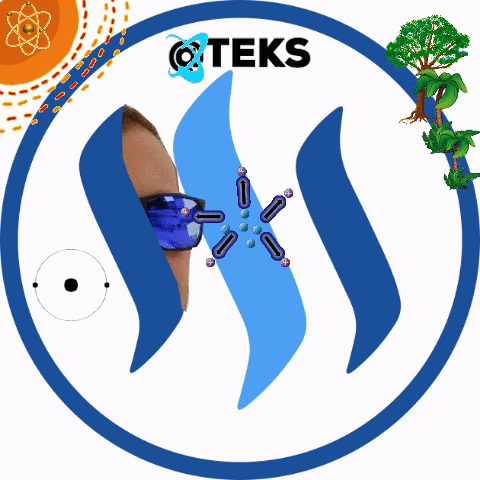~ Could TRAPPIST-1 planets have more water than Earth? ~
The planetary system that orbits the cold star TRAPPIST-1, of which we already know seven planets, is once again news. This time by a recently published research from which it appears that the existence of huge amounts of water in some of them is likely.
1 - Artistic representation of the star TRAPPIST-1 . - Credits: ESO
The ultra-cold red dwarf star 2MASS J23062928-0502285, also known as TRAPPIST-1, gets its shortest name from the TRAPPIST-south telescope that has the European space agency of the southern observatory (ESO), located at the La Silla observatory. This observatory is located in a privileged place for astronomical observation, located in one of the driest places on Earth, also has minimal light pollution since it is very far from large population centers (Atacama Desert, Chile). The number 1 that accompanies the name of the star is given by being the first observed by the aforementioned telescope.
2 - Comparison of the masses and energy input of the seven TRAPPIST-1 planets, along with the properties of the four innermost Solar System planets. - Credits:NASA /JPL - Caltech
This extrasolar planetary system consisting of seven planets is being studied very closely by a large number of scientists, using all available tools for the observation of exoplanets in transit around a red dwarf star. These tools include the almost complete SPECULOOS at the ESO Paranal Observatory, and from the NASA, the Spitzer Space Telescope and the Kepler Space Telescope.
Thanks to this, a group of scientists led by Simon Grimm (University of Bern, Switzerland), in collaboration with nineteen other universities, has published a much more precise paper on the densities of these planets. Entitled "The nature of the TRAPPIST-1 exoplanets", published by Astronomy & Astrophysics.
"The TRAPPIST-1 planets are so close together that they interfere with each other gravitationally, so the times when they pass in front of the star shift slightly. These shifts depend on the planets' masses, their distances and other orbital parameters. With a computer model, we simulate the planets' orbits until the calculated transits agree with the observed values, and hence derive the planetary masses."
Q1 - Simon Grimm, main author, eso1805
The data collected from the densities combined with the models of the composition of the planets, suggests that the planets orbiting TRAPPIST-1, are not sterile worlds. They seem to contain significant amounts of volatile materials, probably water. And in proportions much higher than on our planet. The proportion of water with respect to the mass of the Earth is 0.02%, however in some of the planets of TRAPPIST-1 this ratio becomes 5%.
"Densities, while important clues to the planets' compositions, do not say anything about habitability. However, our study is an important step forward as we continue to explore whether these planets could support life.”
Q2 - Brice-Olivier Demory, co-author, eso1805
3 - Artistic image of the planetary system that orbits TRAPPIST-1 comparing it with Earth.- Credit: ESO/M. Kornmesser
While TRAPPIST-1b and c, seem to have much thicker atmospheres than the Earth, TRAPPIST-1d is the lightest because it only has 30% of the mass that our planet has.
TRAPPIST-1e on the other hand is slightly denser than Earth, which leads to speculate that it may have a denser iron core. But by its characteristics of mass, size and radiation received from its star is the most similar to our pale blue dot.
The planets furthest from TRAPPIST-1, which are f, g, and h, do not receive enough heat to hold liquid water on their surface. And if its atmosphere is thin it will be very difficult to find heavy molecules such as carbon dioxide.
This planetary system with planets of similar size to the Earth is located only forty light years from us. A huge distance with the current technology, but with the advance of our civilization, perhaps one of the seven planets is colonized by the following generations.
References
“The nature of the TRAPPIST-1 exoplanets.” S. Grimm et al., Astronomy & Astrophysics. February, 5, 2018. doi: 10.1051/0004-6361/201732233 - PDF
http://www.eso.org/public/archives/releases/sciencepapers/eso1805/eso1805a.pdf
Q1, Q2, 1,2,3 - eso1805— Science Release
https://www.eso.org/public/unitedkingdom/news/eso1805/

Gift-thanks to @markperandin
Let's take care of the pale blue dot
Enjoy your day. Enjoy your life.

Gift-thanks to @stellabelle
Thanks for this!
Hope so. No matters that them are far away from us, that would be a really great notice.
Indeed.
Thanks to the new observation tools that will be available, we may have more good news about this planetary system this year.
Well that would be cool. I remember i did some posts months ago about trapist and some other planets.
Im a fan of Space X and well about planets, stars and all that things in general. So lets see what info them can show to us.
Have a good day bro :)
I also wrote about this amazing planetary system a few months ago. For space lovers this discovery has been a great event.
We will be waiting for new data as soon as it is published.
Thank you, have a nice day!
We should stop with the Mars nonsense and get to work on colony ships.
Hehehe Step by step, first they will start with the most affordable challenges to give time to the evolution of technology. For the construction of a colony ships we will need a cheap way to take tons of materials through the atmosphere.
We need a base on the Moon to transfer materials to and from the asteroid belt until we can get artificial gravity working and build a permanent station on the belt.
Yes I agree. That would be an efficient way to get enough resources to address the colonization of other planetary systems.
Hi, I found some acronyms/abbreviations in this post. This is how they expand:
Congratulations! This post has been upvoted from the communal account, @minnowsupport, by teks from the Minnow Support Project. It's a witness project run by aggroed, ausbitbank, teamsteem, theprophet0, someguy123, neoxian, followbtcnews, and netuoso. The goal is to help Steemit grow by supporting Minnows. Please find us at the Peace, Abundance, and Liberty Network (PALnet) Discord Channel. It's a completely public and open space to all members of the Steemit community who voluntarily choose to be there.
If you would like to delegate to the Minnow Support Project you can do so by clicking on the following links: 50SP, 100SP, 250SP, 500SP, 1000SP, 5000SP.
Be sure to leave at least 50SP undelegated on your account.
@echowhale team swimming by with your upvote
This post has received a 1.75 % upvote from @boomerang thanks to: @teks
very nice
Congratulations @teks! You received a personal award!
You can view your badges on your Steem Board and compare to others on the Steem Ranking
Vote for @Steemitboard as a witness to get one more award and increased upvotes!